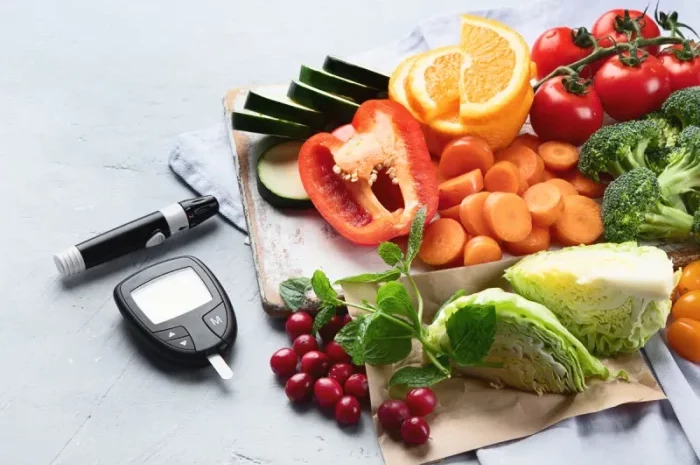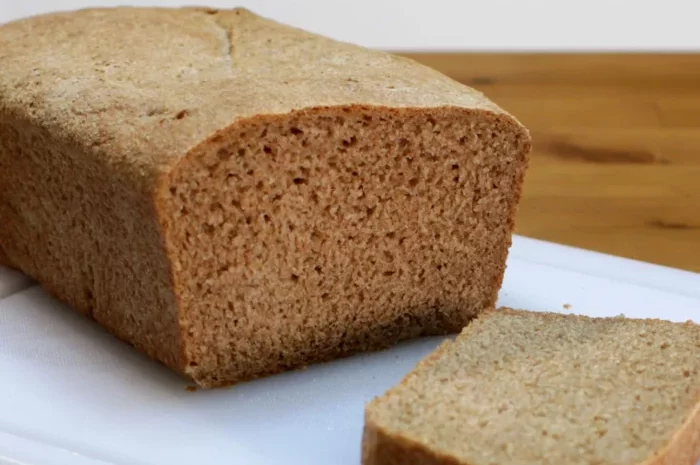Explanation of Prediabetes
Prediabetes is a condition where blood sugar levels are higher than normal but not yet high enough to be classified as type 2 diabetes. It’s a critical warning sign indicating an increased risk of developing diabetes, heart disease, and stroke. The condition is diagnosed through various blood tests, such as fasting plasma glucose (FPG) test, oral glucose tolerance test (OGTT), or HbA1c test.
Implications for Health
Prediabetes can lead to several health complications if left unmanaged. The excess blood sugar levels can cause damage to the cardiovascular system, increase the risk of heart disease, and affect kidney function. Over time, prediabetes can progress to type 2 diabetes, which requires more intensive management and has more severe health consequences.
The Importance of Diet
Diet plays a pivotal role in managing blood sugar levels and preventing the progression of prediabetes. Making informed food choices can help maintain healthy blood glucose levels and improve overall health. It’s crucial to focus on a balanced diet rich in nutrients, low in refined sugars, and high in fiber. Managing carbohydrate intake and choosing foods with a low glycemic index can significantly impact blood sugar control.
Foods to Avoid
Simple Carbohydrates and Foods with Added Sugars
Simple carbohydrates are quickly broken down into glucose, causing a rapid spike in blood sugar levels. Foods high in added sugars not only contribute to these spikes but also offer little nutritional value.
Candy: High in refined sugars and lacking in essential nutrients.
Desserts: Cakes, cookies, and pastries often contain high levels of sugar and refined flour.
Sugary Beverages: Sodas, energy drinks, and sweetened teas can cause quick blood sugar spikes due to their high sugar content.
Refined Grains
Refined grains have been stripped of fiber and nutrients, leading to quicker digestion and a rapid increase in blood sugar levels.
White Bread: Made from refined flour, which lacks the fiber needed to slow down glucose absorption.
Pasta: Regular pasta made from refined wheat flour can cause a quick rise in blood sugar.
Rice: White rice, in particular, is low in fiber and high in carbohydrates.
High-Fat Meats and Fried Foods
High-fat meats and fried foods can contribute to insulin resistance, making it harder for the body to regulate blood sugar levels.
Processed Meats: Sausages, hot dogs, and bacon are high in unhealthy fats and can affect insulin sensitivity.
Fried Foods: Fried chicken, French fries, and other deep-fried items contain trans fats that can exacerbate insulin resistance.
Healthy Alternatives
Whole Grains
Whole grains are rich in fiber, which helps slow down glucose absorption and maintain steady blood sugar levels.
Whole Wheat Bread: Opt for whole wheat or whole grain bread instead of white bread.
Whole Grain Pasta: Choose pasta made from whole grains or alternative flours like chickpea or lentil flour.
Brown Rice: A better alternative to white rice, as it retains the bran and germ, providing more fiber.
Lean Proteins
Lean proteins help in stabilizing blood sugar levels and provide essential nutrients without the unhealthy fats found in processed meats.
Skinless Poultry: Chicken or turkey without the skin.
Fish: Salmon, mackerel, and sardines are excellent sources of omega-3 fatty acids.
Plant-Based Proteins: Beans, lentils, and tofu are great options for protein without added fats.
Non-Starchy Vegetables
Non-starchy vegetables are low in carbohydrates and high in fiber, vitamins, and minerals.
Leafy Greens: Spinach, kale, and Swiss chard are excellent choices.
Cruciferous Vegetables: Broccoli, cauliflower, and Brussels sprouts.
Other Veggies: Bell peppers, zucchini, and asparagus.
Dietary Tips
Reading Food Labels
Understanding food labels can help you make better choices by identifying hidden sugars and unhealthy fats.
Check Ingredients: Look for added sugars like corn syrup, fructose, or sucrose.
Serving Size: Pay attention to serving sizes to avoid overeating.
Nutritional Content: Choose foods with higher fiber content and lower added sugars.
Portion Control
Managing portion sizes can help prevent overeating and maintain blood sugar levels within a healthy range.
Use Smaller Plates: This can help control portion sizes and reduce overall calorie intake.
Measure Portions: Use measuring cups and food scales to keep track of serving sizes.
Eat Slowly: Eating slowly and mindfully can help you recognize when you’re full.
Meal Planning
Planning meals in advance can help you stick to a healthy diet and avoid unhealthy food choices.
Weekly Planning: Plan your meals for the week to ensure you have healthy options available.
Balanced Meals: Include a variety of foods from different food groups in each meal.
Healthy Snacks: Prepare healthy snacks like cut vegetables, fruits, or nuts to avoid reaching for unhealthy options.
Lifestyle Recommendations
Regular Exercise
Physical activity helps improve insulin sensitivity and lowers blood sugar levels.
Aerobic Exercise: Activities like walking, cycling, or swimming for at least 30 minutes a day.
Strength Training: Lifting weights or using resistance bands to build muscle mass and improve glucose metabolism.
Consistency: Aim for regular exercise most days of the week.
Weight Management
Maintaining a healthy weight can reduce the risk of developing type 2 diabetes and improve overall health.
Set Realistic Goals: Aim for a gradual weight loss of 1-2 pounds per week.
Healthy Eating: Focus on a balanced diet rich in whole foods and low in processed foods.
Stay Active: Incorporate physical activity into your daily routine.
Stress Management
Chronic stress can negatively affect blood sugar levels and overall health.
Mindfulness: Practice mindfulness or meditation to reduce stress levels.
Healthy Habits: Ensure adequate sleep, stay hydrated, and engage in relaxing activities.
Professional Help: Consider talking to a therapist or counselor if stress becomes overwhelming.
Recipes and Meal Ideas
Breakfast
Oatmeal with Berries and Nuts
Ingredients:
1 cup rolled oats
2 cups water or unsweetened almond milk
1/2 cup fresh berries
1/4 cup chopped nuts
1 tbsp chia seeds
A pinch of cinnamon
Instructions:
Bring water or almond milk to a boil.
Add oats and reduce heat to a simmer.
Cook for about 5-7 minutes, stirring occasionally.
Top with berries, nuts, chia seeds, and cinnamon.
Lunch
Quinoa Salad with Vegetables and Lean Protein
Ingredients:
1 cup cooked quinoa
1 cup chopped cucumbers
1 cup cherry tomatoes, halved
1/2 cup diced bell peppers
1/4 cup red onion, finely chopped
1 cup grilled chicken breast or tofu
2 tbsp olive oil
Juice of 1 lemon
Salt and pepper to taste
Instructions:
In a large bowl, combine quinoa, cucumbers, tomatoes, bell peppers, and red onion.
Add grilled chicken or tofu.
Drizzle with olive oil and lemon juice.
Season with salt and pepper and toss to combine.
Dinner
Baked Salmon with Roasted Vegetables
Ingredients:
4 salmon fillets
2 tbsp olive oil
1 tsp garlic powder
1 tsp dried thyme
Salt and pepper to taste
1 cup broccoli florets
1 cup baby carrots
1 cup Brussels sprouts, halved
Instructions:
Preheat oven to 400°F (200°C).
Place salmon fillets on a baking sheet and brush with olive oil.
Season with garlic powder, thyme, salt, and pepper.
Arrange vegetables around the salmon on the baking sheet.
Drizzle vegetables with olive oil and season with salt and pepper.
Bake for 20-25 minutes, or until salmon is cooked through and vegetables are tender.
Snacks
Greek Yogurt with Flaxseeds and Fruit
Ingredients:
1 cup plain Greek yogurt
1 tbsp flaxseeds
1/2 cup sliced strawberries or blueberries
Instructions:
Mix flaxseeds into Greek yogurt.
Top with sliced strawberries or blueberries.
Medical Advice
It’s essential to consult with healthcare professionals for personalized advice on managing prediabetes. Regular monitoring of blood sugar levels, following a tailored diet plan, and making necessary lifestyle changes can significantly impact your health. Your doctor can help you understand your specific needs and recommend appropriate interventions.
Monitoring Blood Sugar Levels
Regularly checking blood sugar levels helps track progress and make necessary adjustments to your diet and lifestyle.
Individualized Diet Plans
A registered dietitian can help create a diet plan tailored to your specific health needs and preferences, ensuring that you receive balanced nutrition while managing blood sugar levels.
Professional Support
Working with healthcare professionals, including doctors, dietitians, and fitness trainers, provides a comprehensive approach to managing prediabetes and improving overall health.
Conclusion
Managing prediabetes through diet and lifestyle changes is crucial in preventing the progression to type 2 diabetes. Avoiding foods that spike blood sugar levels, incorporating healthier alternatives, and making informed choices can make a significant difference. Alongside dietary changes, regular exercise, weight management, and stress reduction are essential components of a healthy lifestyle. Remember to consult with healthcare professionals for personalized advice and regular monitoring to stay on track with your health goals.
Related Topics
























